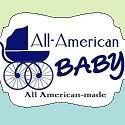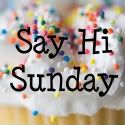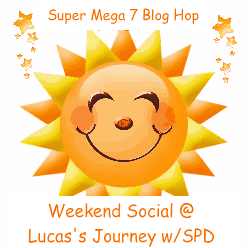 Daddy on an errand to Lowe’s, and he didn’t have anything to destroy. So, he actually started building. I’ve been working with him on stacking and building, trying to model the building-up process instead of the knocking-down process. I was excited to see him working to stack the blocks on top of each other, experimenting with stability and balance. I helped him along a little by steadying his tower as he added a new block, just so that he could experience some success and would want to continue. Then he began adding his little dinosaur toys to the top of each stack of blocks he had created, and he was so proud! Sometimes the toy was too big for the tower, and as it crumbled we laughed and started again. It was a beautiful learning moment, and I could just see the wheels turning in his little head as he made connections, solved problems and had fun. The mother in me was just enjoying his quiet concentration and the time spent alone with him (while of course admiring his obvious engineering and architectural talents). And as always, the educator in me was reminded of the reason block play has always been and is still such an important tool in learning and development. My 4-year-old daughter loves to build as well, and although we usually have to allow her a “special place” for her creations (read: away from her brother), she has the skill and knowledge to create wonderful fantasy worlds with her blocks and her little ponies!
Daddy on an errand to Lowe’s, and he didn’t have anything to destroy. So, he actually started building. I’ve been working with him on stacking and building, trying to model the building-up process instead of the knocking-down process. I was excited to see him working to stack the blocks on top of each other, experimenting with stability and balance. I helped him along a little by steadying his tower as he added a new block, just so that he could experience some success and would want to continue. Then he began adding his little dinosaur toys to the top of each stack of blocks he had created, and he was so proud! Sometimes the toy was too big for the tower, and as it crumbled we laughed and started again. It was a beautiful learning moment, and I could just see the wheels turning in his little head as he made connections, solved problems and had fun. The mother in me was just enjoying his quiet concentration and the time spent alone with him (while of course admiring his obvious engineering and architectural talents). And as always, the educator in me was reminded of the reason block play has always been and is still such an important tool in learning and development. My 4-year-old daughter loves to build as well, and although we usually have to allow her a “special place” for her creations (read: away from her brother), she has the skill and knowledge to create wonderful fantasy worlds with her blocks and her little ponies! It is so much fun to see the creativity at work in both of them, yet in such different ways.
It is so much fun to see the creativity at work in both of them, yet in such different ways. More about Block Play
Play is an important part of a child’s learning and development. The wonderful thing about classic wood toys, such as unit blocks, is that they require the child to guide the play, and thus help to encourage creativity, problem solving and critical thinking. The constructive and creative play that results from block play will benefit the child in all areas of learning and development. Children can use their imagination to create structures, while learning the practical science and math concepts required for building. Block play helps children learn number concepts, develop logical thinking and spatial understanding, and improve motor skills.
Play is an important part of a child’s learning and development. The wonderful thing about classic wood toys, such as unit blocks, is that they require the child to guide the play, and thus help to encourage creativity, problem solving and critical thinking. The constructive and creative play that results from block play will benefit the child in all areas of learning and development. Children can use their imagination to create structures, while learning the practical science and math concepts required for building. Block play helps children learn number concepts, develop logical thinking and spatial understanding, and improve motor skills.
Observing block play is just one way to experience child-initiated learning. Parents observing children immersed in block play will begin to understand what the children learn through block play, including creativity, collaboration, science skills, math skills, and more. Developmentally appropriate play for children includes significant time spent with hands-on, manipulative materials. Blocks meet this need for hands-on exploration, and are a fundamental learning material because they require open play. Children playing with blocks can make them into anything they want them to be. The child decides.
The age of the child may determine the type of exploration and play that takes place. Young toddlers begin simply with sensory exploration, finding out the feel, shape, weight of the blocks. Next, children will move into fantasy play with the blocks, which helps them to think creatively, and problem solve. Children’s explorations with blocks help deepen their understanding of the practical world through trial and error experimentation with concepts such as gravity, stability and balance. In addition, collaborative experiences are plentiful when children interact with each other during block play. Studies even suggest that block play contributes positively to language development, as young children use various communication strategies and shared meaning while they are engaged in block play. The study found that children use unit blocks and supplemental props as important play materials “to promote oral language and emergent literacy skills”. (If you are interested in the study details you can read more here: http://findarticles.com/p/articles/mi_hb1439/is_3_21/ai_n29341306/ ). Providing blocks for block play is just one way parents can enrich their child’s development, and encourage creativity, problem solving, critical thinking, and collaborative skills.
More about Blocks
Traditional Block Sets are based on the standard 1-3/8" x 2-3/4" x 5-1/2" unit, which is a standard block set dimension used in schools. Each block is a fraction or multiple of the basic unit, providing blocks that support successful play. These sets include an assortment of block shapes and sizes to provide a wide range of building options to the child using them. The number and shapes of blocks can vary depending on the size of the set. There are excellent hard maple blocks in this size that can be found here: http://www.all-americanbaby.net/unit-blocks-starter-set.html.
In addition, there are unit blocks that are based on the smaller 1 inch unit size. The base block unit is 1" and each dimension of all blocks is a multiple of 1" so blocks can be stacked cleanly and uniformly. The advantage I have found with these blocks lies in the size for younger children. The smaller block size is more appropriate for little hands, and the blocks are not as heavy (especially when they fall!) for the littlest builder. Older children can still enjoy these blocks and by adding on or combing sets you can create wonderful building opportunities. Find these “My Best Blocks” sets at http://www.all-americanbaby.net/mybebljubuse.html.
Alphabet blocks are another favorite and are great for teaching block skills along with letters or even numbers and other skills! Alphabet blocks are not just ABC’s anymore…you can find nursery rhyme blocks, number blocks, shapes and pattern blocks and so much more. See them here: http://www.all-americanbaby.net/blocks.html.
What a perfect opportunity to play with your child while observing the way their mind works! Ask them what they are doing, and why. Have them explain to you the reason they stack the blocks a certain way, and not a different way. Let them use other small toys to add to their block kingdom and make up the story to go along with it. As I’ve said before, when it comes to classic block play, batteries are not required, but imagination is!
More about Blocks
Traditional Block Sets are based on the standard 1-3/8" x 2-3/4" x 5-1/2" unit, which is a standard block set dimension used in schools. Each block is a fraction or multiple of the basic unit, providing blocks that support successful play. These sets include an assortment of block shapes and sizes to provide a wide range of building options to the child using them. The number and shapes of blocks can vary depending on the size of the set. There are excellent hard maple blocks in this size that can be found here: http://www.all-americanbaby.net/unit-blocks-starter-set.html.
In addition, there are unit blocks that are based on the smaller 1 inch unit size. The base block unit is 1" and each dimension of all blocks is a multiple of 1" so blocks can be stacked cleanly and uniformly. The advantage I have found with these blocks lies in the size for younger children. The smaller block size is more appropriate for little hands, and the blocks are not as heavy (especially when they fall!) for the littlest builder. Older children can still enjoy these blocks and by adding on or combing sets you can create wonderful building opportunities. Find these “My Best Blocks” sets at http://www.all-americanbaby.net/mybebljubuse.html.
Alphabet blocks are another favorite and are great for teaching block skills along with letters or even numbers and other skills! Alphabet blocks are not just ABC’s anymore…you can find nursery rhyme blocks, number blocks, shapes and pattern blocks and so much more. See them here: http://www.all-americanbaby.net/blocks.html.
What a perfect opportunity to play with your child while observing the way their mind works! Ask them what they are doing, and why. Have them explain to you the reason they stack the blocks a certain way, and not a different way. Let them use other small toys to add to their block kingdom and make up the story to go along with it. As I’ve said before, when it comes to classic block play, batteries are not required, but imagination is!























2 comments:
Cute blog!! I am now a follower!!
Thank you for following me. I am following you to now.
Post a Comment